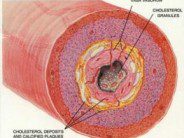Heart failure, also known as congestive heart failure, results when the heart cannot pump blood in a sufficient amount to meet the metabolic needs of the body. Symptoms of the disorder include shortness of breath, easy fatigability, leg swelling, and exercise intolerance. Ultrasound of the heart, known as echocardiography, is used to diagnose the condition and usually shows decreased left ventricular ejection fraction or poor left ventricular diastolic relaxation. The most common causes of congestive heart failure are myocardial infarction, uncontrolled hypertension, valvular heart disease, and cardiomyopathies. In adults, the condition results in roughly 2% of the population but increases in prevalence in older individuals. Researchers from Yale University, lead by Dr. Jersey Chen, have shown that the rate of hospitalization and one year mortality for patients with heart failure has decreased over the past 10 years. The results of their study were published online in the Journal of the American Medical Association. The study used data obtained from Medicare fee-for-service beneficiaries during the years 1998 to 2008. The investigators showed that the heart failure hospitalization rate, when adjusted for age, sex, and race, declined from 1998 to 2008 by 29.5%. In 1998, the rate was 2,845 per 100,000 person-years and in 2008 the rate was 1,998 per 100,000 person years. In was found that the age-adjusted heart failure hospitalization rate declined for all race-sex categories, but black men had the lowest rate of decline during the study period. The risk adjusted 1-year mortality from heart failure decreased from 31.7% in 1999 to 29.6% in 2008. This was only a modest decline, but is an overall improvement. The authors wrote, “To our knowledge, this is the largest study to date examining trends in [heart failure] hospitalization rates across the United States. We found a relative 29.5% decline in the risk-adjusted [heart failure] hospitalization rate from 1998 to 2008 that was primarily the result of fewer unique individuals hospitalized for [heart failure]. The decline in [heart failure] hospitalizations is even more remarkable given that a small trend toward improved survival after [heart failure] hospitalization would allow for potentially more repeat hospitalizations for [heart failure] in a given year. In absolute terms, this implies that if the 2008 Medicare fee-for-service population of 27.3 million had an [heart failure] hospitalization rate similar to that of 1998, an additional 229,000 [heart failure] hospitalizations would have been expected that did not occur. With a mean [heart failure] hospitalization cost of $18,000 in 2008, this decline represents a savings of $4.1 billion in fee-for-service Medicare”. The authors suggest that better control of heart failure risk factors, better control of blood pressure, use of evidence based therapies, and a shift toward outpatient treatment of heart failure may have contributed to the decline in heart failure hospitalizations and mortality.
See the YouTube Video with Dr. Jersey Chen regarding the study details below:
Reference:
Jersey Chen et al. “National and Regional Trends in Heart Failure Hospitalization and Mortality Rates for Medicare Beneficiaries, 1998-2008” JAMA 2011;306(15):1669-1678 doi: 10.1001/jama.2011.1474










 DrSamGirgis.com is a blog about medicine, nutrition, health, wellness, and breaking medical news. At DrSamGirgis.com, the goal is to provide a forum for discussion on health and wellness topics and to provide the latest medical research findings and breaking medical news commentary.
DrSamGirgis.com is a blog about medicine, nutrition, health, wellness, and breaking medical news. At DrSamGirgis.com, the goal is to provide a forum for discussion on health and wellness topics and to provide the latest medical research findings and breaking medical news commentary.
{ 0 comments… add one now }